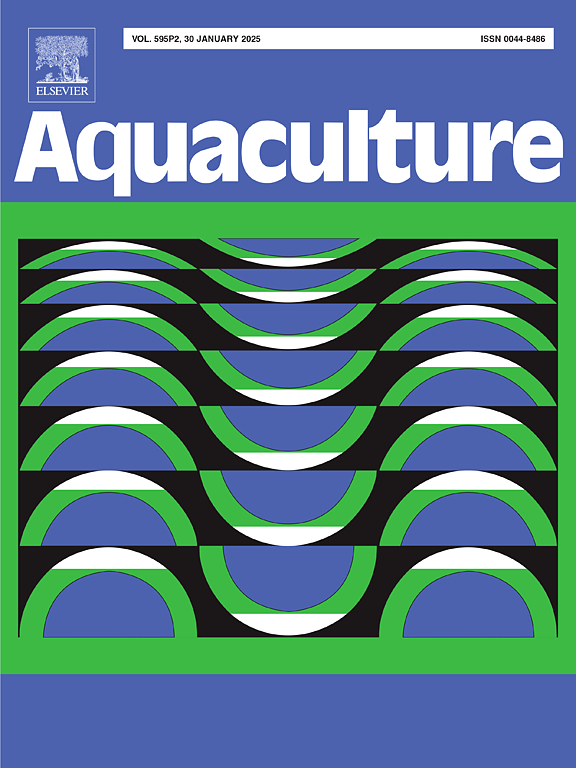Systematic infection of the foot of the mediterranean mussel (Mytilus galloprovincialis) by a trematode parasite (Digenea: Monorchiidae) in the farms of Tyrrhenum and Adriatic Sea (Italy)
IF 3.9
1区 农林科学
Q1 FISHERIES
引用次数: 0
Abstract
Phases of development of a trematode parasite were observed in the histological samples at foot level of the Mediterranean mussel M. galloprovincialis during routine studies between 2008-2021 along Campania coast. Macroscopically, affected animals may display nodular areas and discolouration at foot level. Histopathology revealed the presence of cercaria and metacercariae present in variable number, from 1 to 6 per foot, variously distributed either at the level of the bixogenic glands, the collagen gland or the adhesive plate, or in the muscular portion, with a prevalence in the affected areas ranging from 3.3 % to 20 %. The invasion appeared to originate at the level of the pedal blood vessels located along the structure of the foot or in the terminal part, up to reaching the various muscle or glandular sites. Molecular assay of the rRNA 18S showed an identity of 96.1 % with a trematode belonging to the Monorchidae familiy named Opistomonorcheides delicatus, commonly infecting Carangidae fishes in Pacific Ocean. This is the first morphological and molecular description of this genus affecting the foot of the mediterranean mussels in Italian waters. The presence of this parasite could affect the mussel thread strength to the farm ropes and help the predation of the succeeding host.

意大利第勒纳姆和亚得里亚海养殖场地中海贻贝(Mytilus galloprovincialis)足部吸虫(Digenea: Monorchiidae)的系统感染
在2008-2021年坎帕尼亚沿岸常规研究期间,在地中海加洛省贻贝足部的组织学样本中观察到吸虫寄生虫的发育阶段。从宏观上看,受影响的动物可能在足部显示结节区和变色。组织病理学显示尾蚴和囊蚴数量不等,每英尺1 - 6个,分布在生瘤腺、胶原蛋白腺或粘接板水平,或肌肉部分,在患处的患病率为3.3% - 20%。侵袭似乎起源于沿足部结构或末端部的足部血管水平,直至到达各种肌肉或腺体部位。rRNA 18S的分子鉴定结果表明,该基因与一种名为opistomonorchides delicatus的单兰科吸虫同源性为96.1%,该吸虫常见于太平洋的Carangidae鱼类。这是意大利水域中影响地中海贻贝足部的这一属的第一次形态学和分子描述。该寄生虫的存在会影响贻贝对农场绳索的螺纹强度,有助于后续寄主的捕食。
本文章由计算机程序翻译,如有差异,请以英文原文为准。
求助全文
约1分钟内获得全文
求助全文
来源期刊

Aquaculture
农林科学-海洋与淡水生物学
CiteScore
8.60
自引率
17.80%
发文量
1246
审稿时长
56 days
期刊介绍:
Aquaculture is an international journal for the exploration, improvement and management of all freshwater and marine food resources. It publishes novel and innovative research of world-wide interest on farming of aquatic organisms, which includes finfish, mollusks, crustaceans and aquatic plants for human consumption. Research on ornamentals is not a focus of the Journal. Aquaculture only publishes papers with a clear relevance to improving aquaculture practices or a potential application.
 求助内容:
求助内容: 应助结果提醒方式:
应助结果提醒方式:


